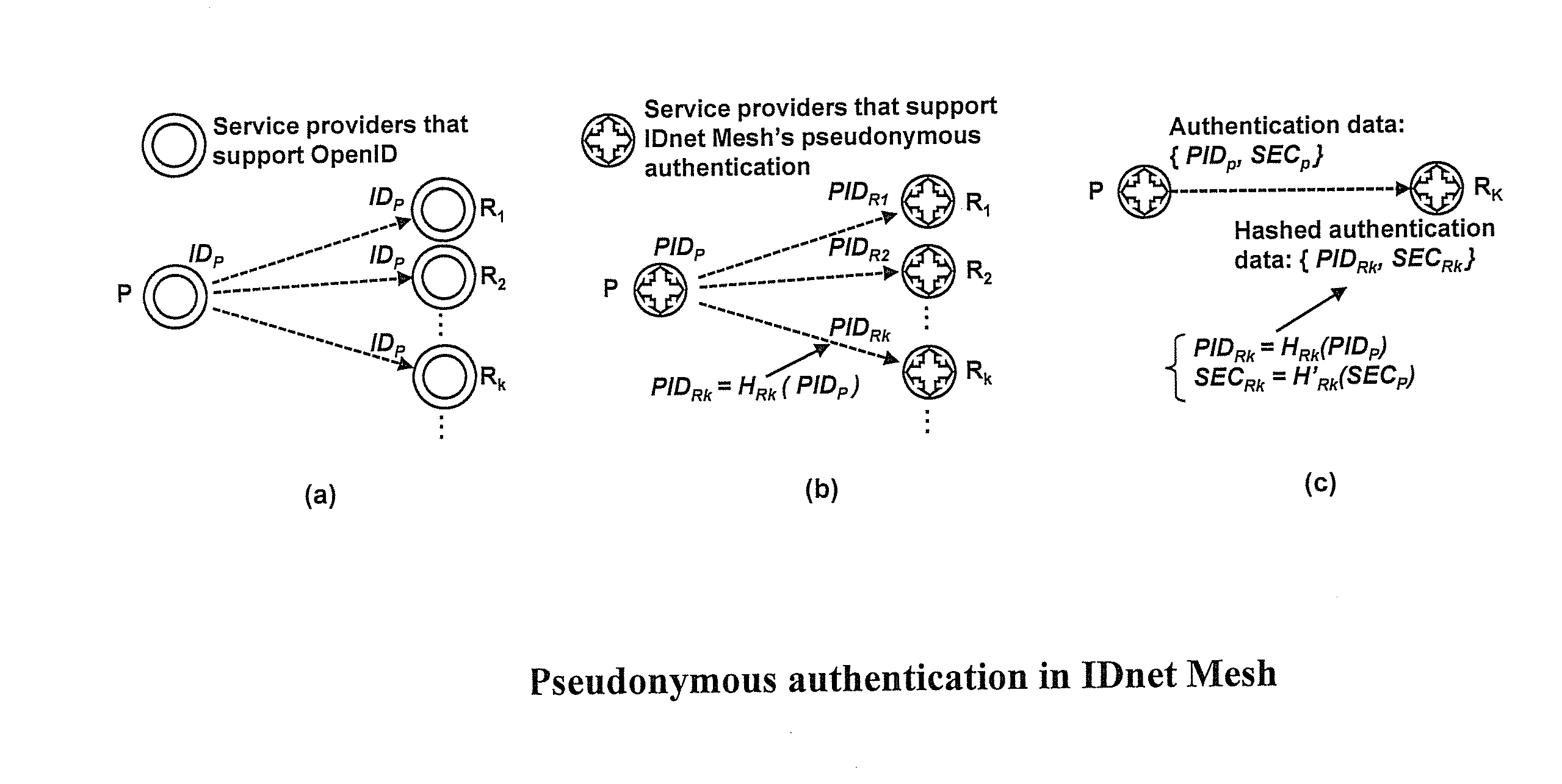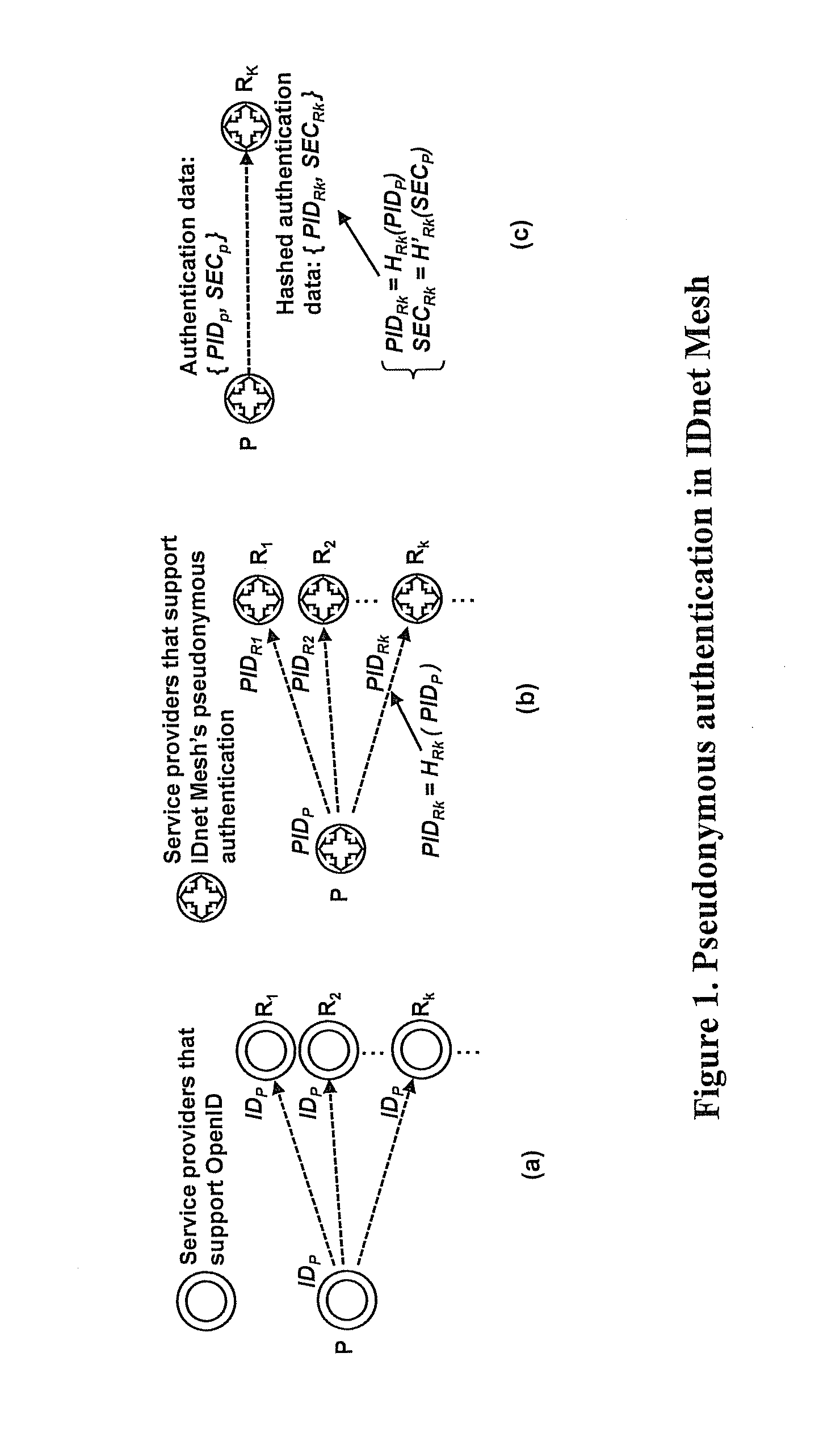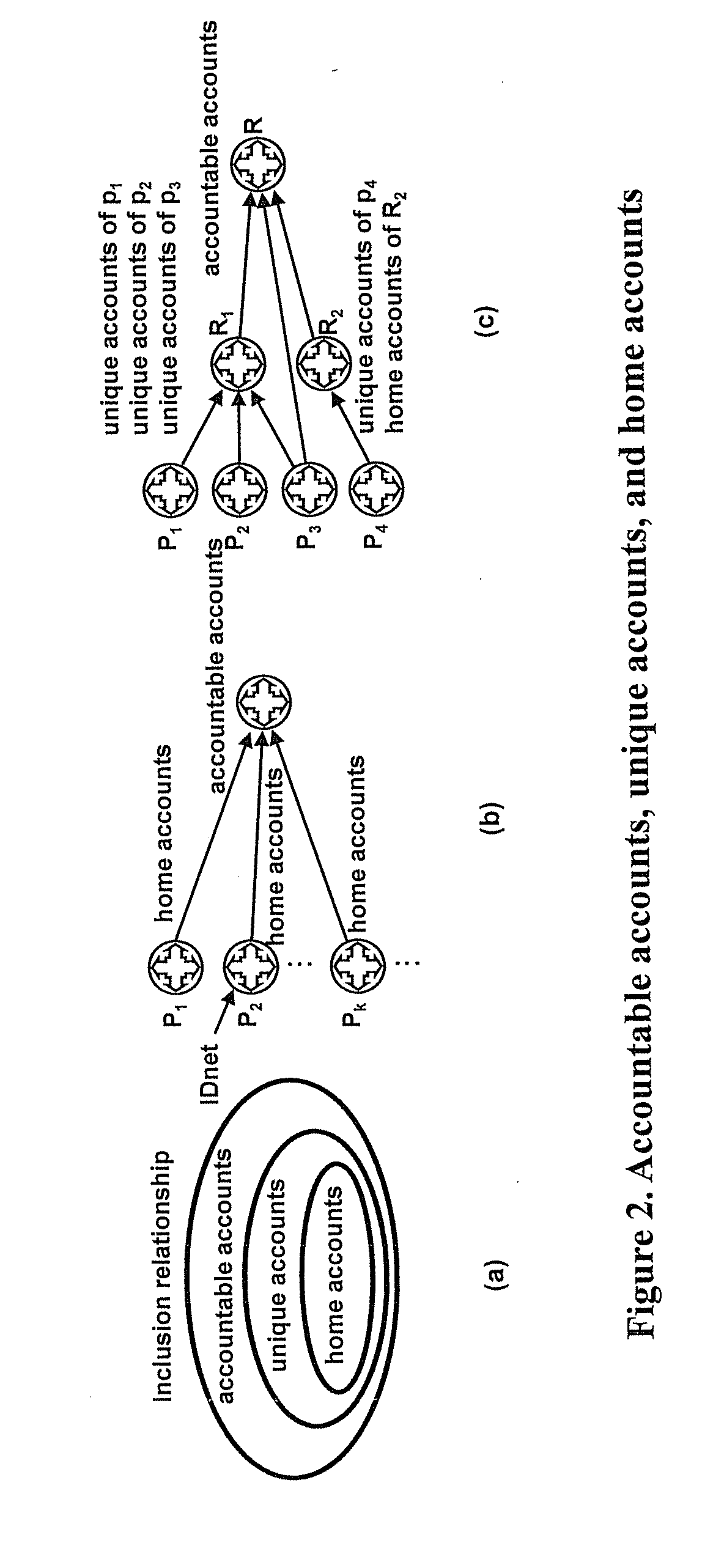[0009]In some embodiments according to the present invention, retaining pseudonymity may be useful for a single sign-on solution to be practical if it is targeted to be widely adopted on
the Internet. In some embodiments, for example, a user may be allowed to show different identifiers to different places. The different identifiers for the same user may be unlinkable to each other. Thus, even if a mapping between a specific
user identifier, for example, at a specific place and the user's real identity is leaked online, it will not lead to the disclosure of the user's real identity at any other places, thereby protecting the user's privacy. Some embodiments may provide, for example, a unique solution that achieves this pseudonymity property for authentication.
[0013]Some embodiments according to the present invention may provide, for example, enablement of
high security. In a single sign-on, for example, the single account that a user registers becomes the user's “
master key” with which the user has the access to everywhere. But this also implies that if this “
master key” is getting compromised, everything is compromised. Therefore, single sign-on should demand much higher security requirements for the “
master key” due to the sensitivity of the key in comparison with a traditional user account. In some embodiments, the pseudonymous public keys
cryptography enables non-repudiation and
high security for the authentication, while retaining pseudonymity at the same time.
[0014]Some embodiments according to the present invention may provide, for example, high
scalability without compromising
high security. In some embodiments, to improve online service
scalability, replica servers are added. IDnet Mesh, for example, follows this approach to achieve high
scalability for its authentication service. However, the replica
server approach could be at a cost of reduced security if the authentication data replicated to these servers are sensitive. The more replica servers added, the higher the chance that sensitive data might be compromised and the lower the security.
[0015]Some embodiments according to the present invention provide, for example, assistance to IDnet Mesh, for example, to solve such conflicts, thereby making authentication data stored on replica servers to be insensitive. In some embodiments, such data might be used to verify a user's identity, but not to generate authentication messages, for example, that can pass such a
verification. Therefore, criminals are unable to use such data for user impersonation when the data are compromised. Furthermore, such data do not reveal any information about who a user is and are highly insensitive. Accordingly, the IDnet Mesh's authentication service can easily scale to serve, for example, billions of
Internet users through large scale replication. It can also be made resilient to distributed denial-of-service (DDoS) attacks due to this high scalability.
[0016]Some embodiments according to the present invention may provide, for example, low cost. The insensitivity of the authentication data stored on replica servers also makes it possible to use cheap computing resources to deploy the IDnet Mesh's
authentication system. For example, some embodiments use inexpensive commodity servers or rent cheaper computing resources provided by third parties, e.g., leased servers or the Amazon Elastic Compute Cloud (Amazon EC2). The low deployment cost is an attractive property of the
system in practice.
[0017]Some embodiments according to the present invention may provide, for example, all of the above properties and / or features at the same time. Some embodiments may provide, for example, the enablement of at least the above five properties. These properties typically conflict easily with each other especially when enabled at the same time, thereby making such an approach quite challenging. However, some embodiments that enable at least the above five properties provide, for example, enablement of an Internet-wide
user authentication solution that characterized by, for example, pseudonymity, high security, and high scalability, all at the same time.
 Login to View More
Login to View More  Login to View More
Login to View More 


